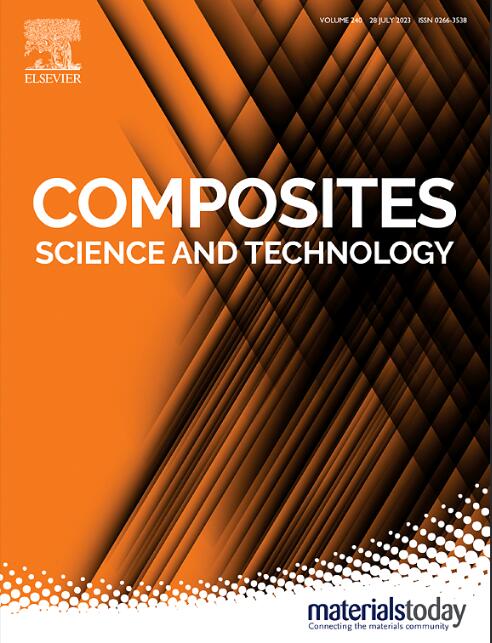碳酸盐改性MgO复合材料导热性能界面驱动结构工程研究
IF 9.8
1区 材料科学
Q1 MATERIALS SCIENCE, COMPOSITES
引用次数: 0
摘要
随着电动汽车(EV)电池向更高能量密度发展,对具有高导热系数(TC)、优异机械强度和抗水化性能的先进热界面材料(TIMs)的需求变得至关重要。TIMs必须有效散热,同时在恶劣的湿热条件下保持结构的完整性,以确保长期的可靠性。在这项研究中,我们开发了一种高性能的环氧复合材料,其中包括热和化学工程氧化镁(MgO)填料。通过热处理和聚丙烯(PPC)表面功能化改性MgO,形成了365 nm的疏水涂层,同时将平均晶粒尺寸从0.9 μm增加到22 μm。这种新方法显著减轻了在50°C的去离子水中120 h后Mg(OH)2的形成。此外,ppc改性MgO与环氧树脂之间的界面工程增强了声子输运,同时降低了界面阻力,导致拉伸应力增加65%,TC从1.192 W/mK提高到2.036 W/mK。通过优化高密度封装(HDP)工艺,我们在填料含量为75.1%的情况下实现了前所未有的9.22 W/mK的TC,超过了传统的环氧基TIMs。该研究展示了结合晶界工程、界面优化和致密填料填料的协同策略来开发下一代TIMs。本文章由计算机程序翻译,如有差异,请以英文原文为准。

Interface-driven structural engineering of polypropylene carbonate-modified MgO composites for enhanced thermal conductivity
As electric vehicle (EV) batteries evolve toward higher energy densities, the demand for advanced thermal interface materials (TIMs) with high thermal conductivity (TC), superior mechanical strength, and anti-hydration properties becomes critical. TIMs must effectively dissipate heat while maintaining structural integrity under harsh thermal and humid conditions to ensure long-term reliability. In this study, we developed a high-performance epoxy composite incorporating thermally and chemically engineered magnesium oxide (MgO) fillers. The MgO was modified via thermal treatment and polypropylene carbonate (PPC) surface functionalization, forming a 365 nm hydrophobic coating layer while increasing the average grain size from 0.9 μm to 22 μm. This novel approach significantly mitigated Mg(OH)2 formation after 120 h in deionized water at 50 °C.Furthermore, the interface engineering between PPC-modified MgO and epoxy enhanced phonon transport while reducing interfacial resistance, leading to a 65 % increase in tensile stress and a TC enhancement from 1.192 W/mK to 2.036 W/mK. By optimizing the high-density packaging (HDP) process, we achieved an unprecedented TC of 9.22 W/mK at a filler content of 75.1 vol%, surpassing conventional epoxy-based TIMs. This study demonstrates a synergistic strategy combining grain boundary engineering, interfacial optimization, and dense filler packing to develop next-generation TIMs.
求助全文
通过发布文献求助,成功后即可免费获取论文全文。
去求助
来源期刊

Composites Science and Technology
工程技术-材料科学:复合
CiteScore
16.20
自引率
9.90%
发文量
611
审稿时长
33 days
期刊介绍:
Composites Science and Technology publishes refereed original articles on the fundamental and applied science of engineering composites. The focus of this journal is on polymeric matrix composites with reinforcements/fillers ranging from nano- to macro-scale. CSTE encourages manuscripts reporting unique, innovative contributions to the physics, chemistry, materials science and applied mechanics aspects of advanced composites.
Besides traditional fiber reinforced composites, novel composites with significant potential for engineering applications are encouraged.
 求助内容:
求助内容: 应助结果提醒方式:
应助结果提醒方式:


